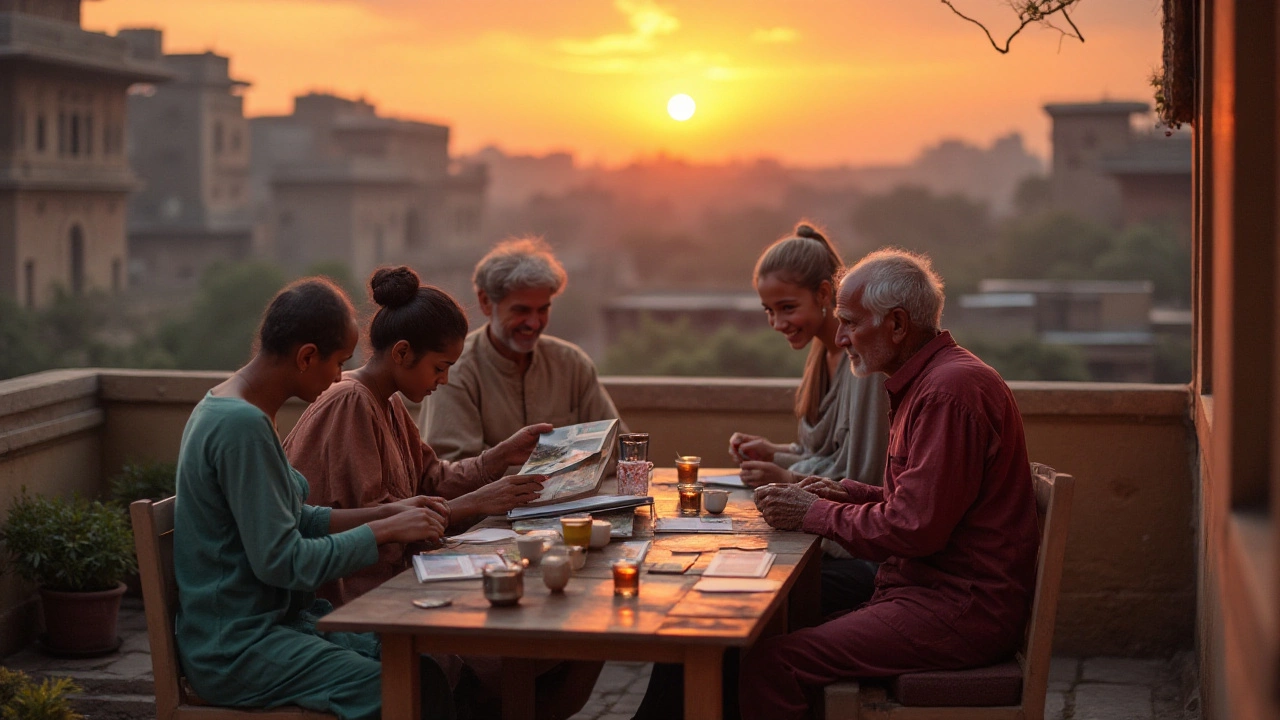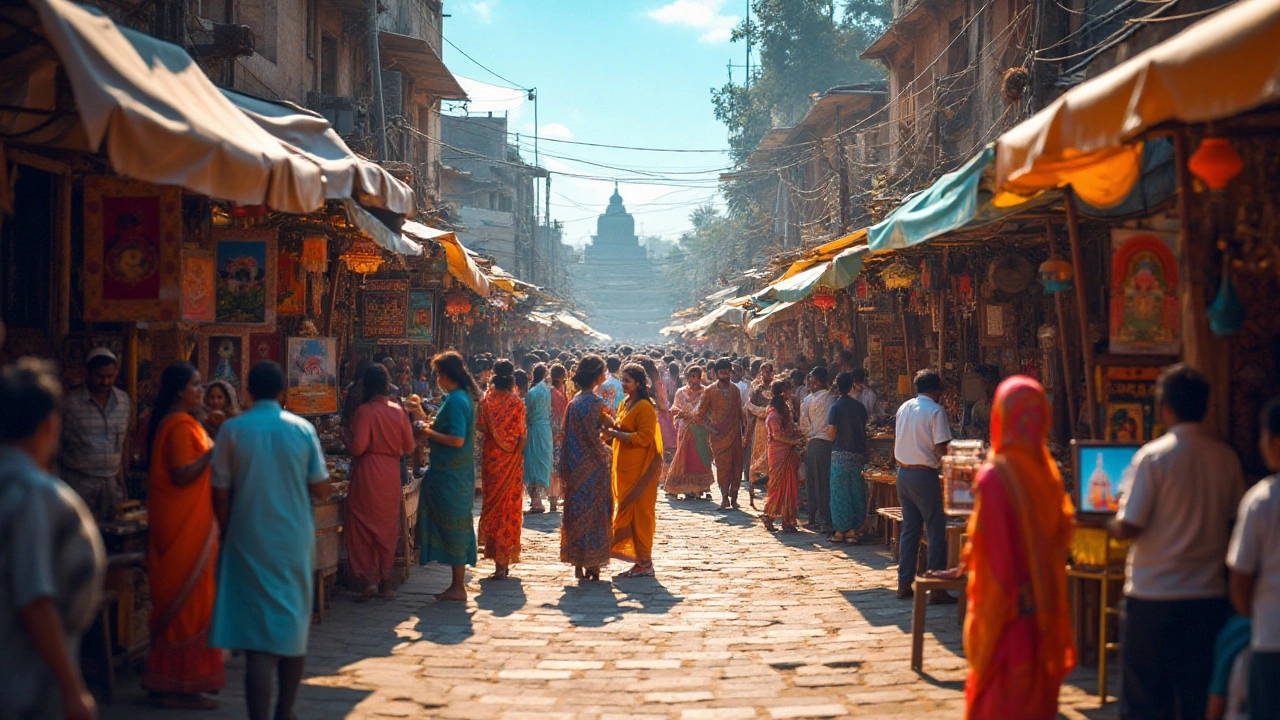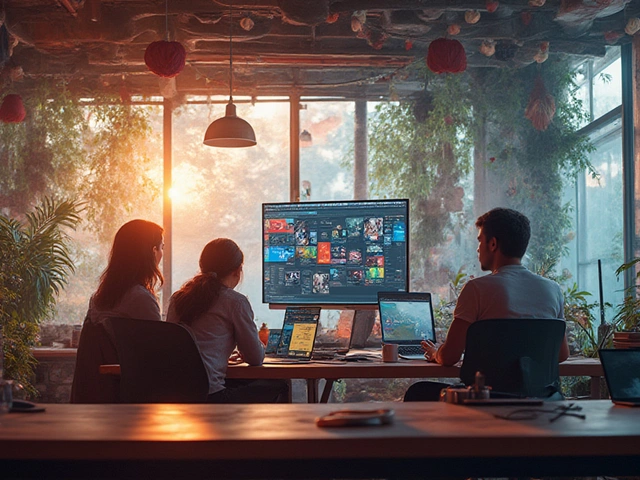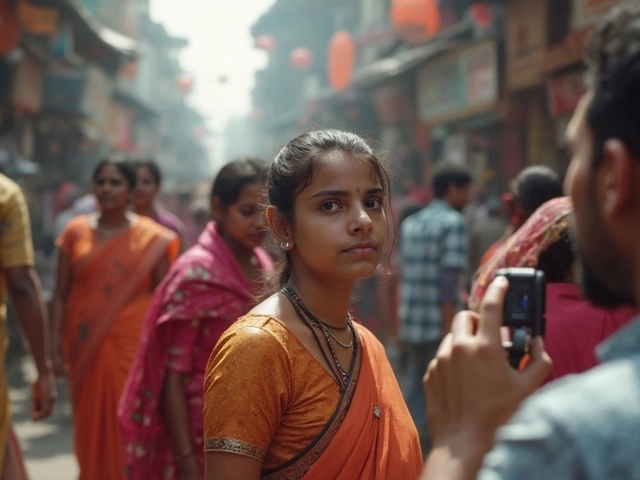In an era where visuals play a crucial role in communication and self-expression, Photoshop has long been a go-to tool for professionals and hobbyists alike. Yet, not everyone is keen on spending hefty amounts to access its features. Fortunately, the world of software development offers several free alternatives that provide excellent editing capabilities.
These free editing tools range from simple, user-friendly applications to sophisticated programs that can challenge even the most experienced editors. Whether you're looking to tweak your vacation photos or produce intricate designs, you'll find a solution among these freely available options.
Join us as we explore some of the best free alternatives to Photoshop, discover their unique features, and uncover tips on how to enhance your photo editing prowess without spending a dime.
- Understanding Your Editing Needs
- Top Free Alternatives to Photoshop
- Features to Look For
- How to Make the Most of Free Tools
- Tips for Seamless Photo Editing
Understanding Your Editing Needs
When embarking on the journey of photo editing, the first crucial step is understanding your own needs and requirements. With so many tools offering a myriad of features, it's easy to get overwhelmed. But don't worry, the key is to focus on what you want to achieve. Are you merely looking to crop and resize images, or do you have aspirations of creating complex composites or illustrations? For those interested in basic edits, a tool with a few essential features might suffice. However, if your goals involve more comprehensive retouching or intricate graphic design, you’d need something more robust.
The next thing to consider is how much you actually know about photo editing and software tools. Are you a beginner, or do you have some level of expertise in photo manipulation? Understanding this will help determine the type of user interface you can handle. Some free photo editing apps are designed to be user-friendly with intuitive interfaces, suitable for beginners, while others offer advanced functionalities that might appeal more to seasoned professionals.
Another significant aspect is the platform you’re using. You may favour a free Photoshop alternative that works online, allowing you flexibility and ease of access, especially if you often switch between different devices. Alternatively, downloadable apps might be your preference if working offline is crucial to your workflow. Pay attention to compatibility with your operating system as well, since some powerful photoshop alternatives might not be supported on all OS platforms.
The final consideration, and perhaps the most personal, involves your personal workflow and project requirements. If you're working as part of a team, you may need to ensure compatibility with the tools your colleagues are using, or that your chosen free image tools support collaborative features, such as cloud storage or file-sharing capabilities. As famed photographer Chase Jarvis once said,
'The best camera is the one that’s with you.' This same philosophy can be applied to editing tools—it's about what fits seamlessly into your creative process.
Understanding these aspects can significantly impact the efficiency and effectiveness of your work. When you align your editing needs with the right tools, not only do you streamline your workflow, but you also enhance the quality of your outputs. Take the time to evaluate your needs thoroughly before diving into a tool, keeping these factors in mind to make an informed choice.
Top Free Alternatives to Photoshop
Photography and digital art have become accessible hobbies, drawing countless enthusiasts into the realm of creativity. Yet, the cost of professional software like Photoshop can be daunting. Thankfully, the digital landscape is rich with free tools that offer robust and comprehensive editing capabilities. Let's explore some of the standout free photo editing apps that can serve as powerful Photoshop alternatives, catering to both beginners and advanced users.
One of the most popular alternatives is GIMP, or GNU Image Manipulation Program. Not only is it open-source, meaning that users across the globe contribute to its development, but it's loaded with features that rival those of paid software. GIMP supports all major file formats and boasts extensive plugin support, increasing its versatility. Users can customize its interface to match their workflow, making it a flexible choice for a diverse range of projects. This adaptability is perhaps its most celebrated feature, highlighted in countless tutorials and user reviews. Its active community ensures frequent updates and a wealth of resources, including a comprehensive manual and tutorials.
Another noteworthy mention is Pixlr. Unlike many other alternatives, Pixlr operates directly from the web, eliminating the need for any software installation. It's a boon for users who are on the move and need quick access to editing tools. Pixlr's interface is intuitive and remarkably similar to Photoshop, easing the learning curve for newcomers. It supports layers, allows for fine-tuning with its multitude of filters, and adheres to non-destructive editing principles. Users often praise Pixlr for its balance of simplicity and feature-rich options, making it a perfect tool for quick edits.
"Pixlr fills a unique niche in the digital editing world, providing a user-friendly platform without compromising on powerful capabilities," says Sophie Lee, a tech columnist with 'The Digital Brush'.
Among the top contenders is also Krita, initially designed for digital painting, which has grown into a comprehensive photo editing software. Artists and graphic designers often favor Krita due to its rich painting tools and smooth running on different operating systems. Krita's brush library caters to those who prioritize creativity, with preset options varying from basic shapes to sophisticated brushes emulating real-world textures. This dedication to an artistic approach makes Krita ideal for illustrators and concept artists looking for a free alternative to expensive software.
For those favoring a cross between simplicity and function, Photopea is a remarkable choice. This web-based solution mirrors the functions of Photoshop quite closely, offering an experience familiar to those accustomed to Adobe's product. Photopea supports PSD files, making it easy for users transitioning away from Photoshop to continue projects with ease. Its browser-based nature means users can access it from any device, enhancing versatility and convenience. The clean, streamlined interface facilitates editing without the clutter, which can often be overwhelming in feature-heavy applications.
Finally, we cannot forget about Canva. While traditionally known for its design capabilities, Canva offers a suite of tools for photo editing. It's particularly appealing for those interested in social media content creation, with its extensive library of templates and easy drag-and-drop features. Although more simplified compared to its counterparts, Canva remains a favorite among marketers and bloggers who need to produce stylish visuals without spending hours on design.
Considerations When Choosing an Editor
While the tools mentioned each have their unique strengths, selecting the right one often depends on your specific needs. Are you looking for intricate design capabilities, or do you require a simple tool for basic editing tasks? Evaluating your requirements in terms of complexity, ease of use, and the specific features you frequently utilize can guide you towards the best fit. With so many excellent free options available, it’s never been a better time to explore the world of digital editing without a financial commitment.
In conclusion, whether you're an aspiring artist or a seasoned designer, the abundance of free image tools means there is likely a perfect match for your creative endeavors without the hefty price tag of Photoshop.

Features to Look For
When you're exploring free photo editing apps, it's essential to understand the features you should prioritize based on your editing goals. To start, consider the range of basic tools. Features like cropping, resizing, and basic color correction are staples, but it's worth noting that some tools also offer advanced functionality such as layer support. Layers are pivotal for creating complex designs as they allow multiple images or effects to be stacked and manipulated independently. This is a must-have for anyone looking to create designs rather than just edit photos.
Another significant feature to consider is the availability of preset filters and effects. These can save a lot of time and provide creative inspiration. Many free alternatives to Adobe Photoshop boast a rich library of filters that mimic those found in professional-grade software. The key is to find an app with filters that align with your style and the tone of your projects. Don't overlook the importance of customization in these apps, which can be a game-changer for personalizing images.
Ease of use is another factor that cannot be understated. Among the top Photoshop alternatives, some applications are known for their intuitive interfaces which make editing accessible even to beginners. Look for apps that offer a balance between simplicity and functionality, ideally with tooltips or tutorials that help flatten the learning curve. A complex interface might have more features, but if you're unable to navigate them efficiently, those features can become more of a hindrance than a help.
Consider the platform's compatibility and performance. Free image tools should ideally work well across different operating systems, such as Windows, macOS, and Linux. This is especially important for those who work across multiple devices. Keeping an eye on compatibility can also involve checking if the software supports various file formats—this includes not just common formats like JPEG and PNG, but also raw image formats for higher-quality edits. Performance can affect your productivity; opt for a tool that runs smoothly without consuming excessive system resources.
In terms of community and support, having access to a vibrant user community can be highly beneficial. This is where users can share experiences, solutions, and creative ideas, enhancing the functionality of the software beyond its initial offering. Some popular photo editing software alternatives are supported by active online forums and dedicated YouTube channels that offer free tutorials and tips. "The strength of an application often lies in the community behind it," notes Sarah Johnson, a photography tech columnist at Digital Trends.
"A supportive community enrichens the tool beyond its built-in capabilities, offering a plethora of unofficial guides, tutorials, and creative ideas for users of every level."
Finally, check for any additional perks or features that might be unique to a specific application. Some free software includes AI-enhanced features aiding in auto-correction or even full-fledged effects creation with minimal manual input. Others might offer integration with cloud services, enabling seamless backup and sharing of your projects. Those keen on collaborating will find real-time editing and sharing features extremely advantageous. Ensuring all these aspects align with your mission can significantly enhance the productivity and quality of your work.
How to Make the Most of Free Tools
The rise of free photo editing apps has empowered both amateur and professional photographers to achieve stunning results without breaking the bank. Utilizing these tools to their fullest potential requires a bit of strategy and understanding of what each brings to the table. The first step is familiarizing yourself with their interface. While some free software mirrors the layout of familiar platforms like Photoshop, others offer unique setups that might take some getting used to. Dedicate time to explore the menus, options, and settings. Diving deep into tutorials specific to each application can significantly shorten the learning curve, as there are a multitude of resources available online from dedicated communities eager to share their knowledge.
Moreover, given that free software often runs on different engines and code bases than Photoshop, understanding the strengths and limitations of each is vital. While some tools excel in vector graphics, others might boast superior brush dynamics. Spend time experimenting with different features and effects to truly understand each application’s capabilities. Dedicate your focus to discovering how these strengths align with your photo editing objectives. For instance, if you're keen on retouching portraits, prioritize tools with advanced blemish fixing and enhancement features.
Photo editing software can sometimes feel overwhelming due to the sheer amount of available features. Here’s where setting clear goals becomes crucial. Ask yourself what you're hoping to achieve with your edits. Are you looking to enhance everyday photos? Or perhaps your aim is to create a piece of digital art? With these intentions in mind, sift through available features and invest time understanding those that resonate most with your goals. Make use of online forums to connect with fellow users who can offer tips, cheat sheets, and valuable shortcuts.
Finally, don’t underestimate the power of shortcuts and plugins. While many might consider these elements as extras, they can significantly increase productivity. Familiarize yourself with the keyboard shortcuts to streamline your workflow. Many free image tools also support plugins that introduce additional layers of functionality—whether it's a new filter or a specific style of brush—these can expand the scope of your images tenfold. Take time to explore community-generated content as free applications often develop thriving networks that produce endless new resources.
"The best software is the one you master," says graphic designer Ian Lurie. "More than just using the tool that’s available, it's about pushing its limits to see what unique expressions you can create."
This quote encapsulates the essence of effectively leveraging free tools as it nudges creators to immerse themselves into the process of experimentation, rather than merely following prescribed routes. A table listing some popular free photo editing software along with their key features can be crucial when selecting the right tool.
| Software | Key Features |
|---|---|
| GIMP | Customizable interface, numerous plugins, advanced editing options |
| Photopea | Browser-based, PSD compatibility, layer support |
| Krita | Ideal for digital painting, great brush engines |

Tips for Seamless Photo Editing
Photo editing can feel like an art form, a craft where every click and adjustment contributes to the final masterpiece. Whether you're using a high-end tool or one of the free photo editing apps, a few strategies can go a long way in refining your editing process. One key aspect is to understand the specific purpose of your edit. Are you aiming for more vibrant colors, better contrast, or perhaps a vintage feel? Knowing your objective helps streamline your workflow and focuses the options available in the software.
Consistency in style is essential, especially if you are editing photos for a project or for social media. Creating a consistent look across images helps in maintaining a brand style. To achieve this, look into creating or downloading presets in editing software. Many free image tools allow users to save settings like color balance and contrast, streamlining the process when you work on multiple images.
Another vital tip is non-destructive editing. This tactic allows you to experiment with your images without permanently altering the original file. Tools like GIMP and Photopea—which are popular Photoshop alternatives—provide layers and history panels so you can make as many changes as you like and still revert to the original image at any time. This kind of flexibility is invaluable, especially when you're exploring creative edits.
"The best results are often achieved when creativity is supported by a solid understanding of technical possibilities," emphasizes a professional editor featured in Digital Photography Review.
Maintaining organization in your projects is crucial. This includes naming files distinctly and organizing them in well-structured folders on your computer. It might sound mundane, but it pays off when you dive into a large pool of projects. Most photo editing software will also allow you to save sessions, making it easier to pick up where you left off. Keeping a record of the steps you've taken can also act as a guide when you want to replicate a similar effect on another project.
Let’s not overlook the importance of sharpening skills through tutorials and community forums. Joining online communities dedicated to photo editing can introduce you to new techniques, handy shortcuts, and even troubleshooting tips when your software doesn’t seem to cooperate. Websites like Reddit and StackExchange are treasure troves of information where even the quirkiest of queries find answers.
Finally, practice is second only to the software itself when it comes to honing your editing skills. Regularly using editing tools will naturally improve your speed and technique. Consider working on passion projects in addition to your regular tasks; this keeps the passion for creativity alive, allowing you to test new ideas without any pressure. As you continue editing, you'll build an intuitive understanding of what works well and what doesn’t.
In wrapping up, the essence of free photo editing is not just about making the best use of available tools but also honing your skills and style over time. Equipped with these tips, you’ll be all set to transform your images effectively, irrespective of the editing app at your disposal.





